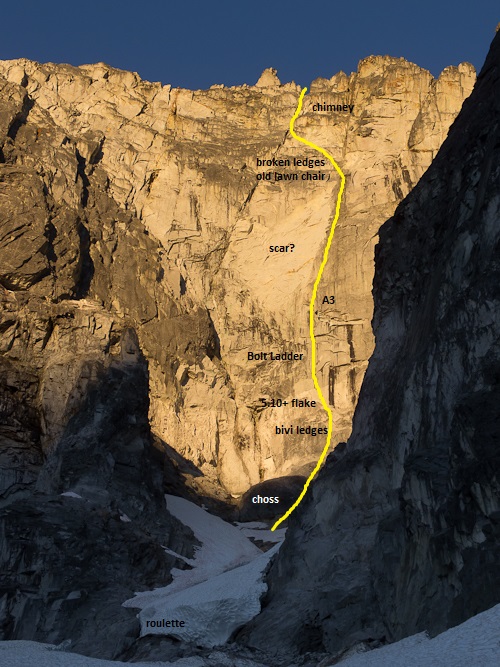-
Posts
2285 -
Joined
-
Last visited
-
Days Won
30
Everything posted by dberdinka
-
If your skin glue is gummy but not filthy it's gotten infiltrated by H2O, use an iron directly on the glue to basically steam it out. It won't restore it completely but it definitely helps. I reglue my skins fairly frequently. Get a heat gun from Harbor Freight (~$10). On low setting really heat up about a foot of skin at a time and use an old credit card or similar thin, flexible scrapper to scrape the glue right of the skin. Done right this should remove 99% of the glue on your skins. Works way better than trying to soak the glue into paper bags. Get a tube of gold label skin glue, warm it up in a bowl of hot water. The apply to skin, again about a foot at a time, lay down some wavy lines and spread with an old credit card again. Use the heat gun again, this time more sparingly, to keep the skin/glue warm while you spread it. Try to get as thin a consistent layer as possible. Let dry 24-48hrs. Always use skin savers.
-
I'm not at all interested in the number of trail and area closures that are going to occur from this action. Amazing they can find 28 million for this but road wash outs go years without repair due to lack of funds (fyi Ruth Creek blew out the road shy of the Hannegan Pass TH this winter). Actually I'm beginning to think blown out roads are a good thing but thats a different topic.
-
I once tried it. We had four days to do it in round trip. That is not nearly enough time! I believe Peter Doorish and Dale Farnham spent many weeks pulling that one off and I can understand why. Should mention when they did it the approach trail up the Chilliwack River was still in excellent shape and very popular. Day 1 we spent 11 hours getting to highcamp approaching form Chilliwack Lake. The trail through the lower valley is just about gone and there is A LOT of bushwacking. Day 2, carrying a wall rack, bivi gear and two days worth of water, we dropped down around the north side and climbed the steep snow gully below the face. We were totally destroyed at this point from the approach. We climbed two pitches of horribly loose and unprotected rock till we realized we weren't going to pull it off in 1.5 days. Retreated by bailing upwards on the Beckey North Buttress Route. Observations Dialing in the approach in advance to Bear Camp, maybe flagging and doing a bit of brush work will dramatically improve your chance of success. The approach gully is horribly dangerous. Timing is a challenge as well. The gully will melt out to absolute choss by early summer most years. I'd plan on late June/early July. Good news is early season there will be running water right near the base of the rock climbing so no need to carry water up there. It's basically a chossy version of the Sheriffs Badge. There appeared to possibly be some very large rock scars on the face though impossible to say if they preceded or followed the original ascent. I would get in at least one training climb on the Badge. Expect a fair bit of nailing. Above the choss we climbed the rock improves. There are some bivi ledges in that stretch just below a large, detached flake ("The 4th pitch climbs the right side of a split pillar 5.10+"). A 4" cam may or may not protect that, definitely wouldn't hurt to bring one large piece. The bolt ladder is 30 years old, hope it's there, consider bringing a minimal bolt kit. Above that the weaknesses it followed seemed reasonably apparent on not the most awesome looking rock. Dale Farnham (RIP) told me the final chimney pitches were very chossy. Ideally you'll climb to the low bivi ledges and fix two ropes above on D1. Day 2 power up to broken ledges near the top of the face. D3 summit. 2 ropes, gear to 5", selection of pins and the ability to replace bolts.
-
The west ridge of Stuart is a classic 5.4 climb. However I get the impression you're asking for short, multipitch recommendations. The w ridge from Stuart Lake would be a very, very long day with miles of exposed scrambling both up and down. Unfortunately the Stuart Lake Zone is a long ways from the Core Zone. From where the trail breaks to Colchuck lake its about 4 miles and 3500' of trail just to access the plateau of the core zone. West Ridge of Prusik (the classic easy moderate) is a couple miles away from there. Doable in a long day for a fit, fast party. Maybe that describes your family? Further west of Prusik Peak there are a number of short excellent low 5th class routes on Razorback, Comet Spire and other peaks. But that's not a possible day trip from where you'll be. Somewhere on this site there's a TR for an easy 3 pitch (5.6?) crag climb by colchuck lake. That might be your best bet for some alpine amibence. I couldn't find it. Maybe someone else can. Ultimately based on where you can camp I don't think you have many options. Maybe leave the gear in the car and enjoy the backpacking and scrambling. Then do some cragging in the leavenworth area. Midway on Castle Rock is the classic low-5th multipitch with a nice summit to boot.
-

Applauding risk acceptance beyond your own limits
dberdinka replied to glassgowkiss's topic in Climber's Board
Heck. I don't understand why I act the way I do much less someone else... More interested in the idea of why and should we applaud such high levels of risk taking. -

Applauding risk acceptance beyond your own limits
dberdinka replied to glassgowkiss's topic in Climber's Board
In an era of carefully crafted images Mark was entirely refreshing in his no-apologies attitude as just another dork from the PNW who loved climbing. Though his vision and abilities surpassed mine by many, many magnitudes, he always felt like one of us and I am sad for his passing. That said the only surprise here is that he died while climbing with a partner. However strong his technical skills may have been, it was readily apparent that caution was thrown far, far to the wind a long time ago. There's only so much loose rubble and thin ice you can speed solo, only so many bad anchors you can belay and rappel off of, before something gives. To wit in the obituaries I've read there are descriptions of collapsing ledges while he onsite-solos 5.11 rockies limestone and rappelling and jumaring off a single nut on Mt Chephren. There's no way that sort of attitude was going to end well. Yet the climbing community as a whole considers this an admirable quality! I think the point Bob tries to make is that the climbing industry has come to glorify excessive risk taking, primarily soloing. In the language ("scrambling", "cordless") in the advertisements, articles and feature length films. I'm not sure why that is. Maybe Alex Honnold was just really photogenic, or it's a reaction to the sterility and ubiquitous of gym climbing. Maybe it's that 12 year-olds can climb 5.15. What ever the reason there's undoubtedly a positive feedback loop of approval and achievement. I'm getting old, and I climb less and worry about my kids more. It's not hard to look at this culture and see something twisted in it's hierarchies and myths a sort of polarity that values either extreme difficulty or extreme risk but nothing in between. I don't have any direct exposure to paragliding culture but my impression is if you came down and said "I just thermaled to 30,000' in that thunder cloud!" you'd be taken to task. But when the climber comes down from the solo adulation increases with the risk and seriousness of consequences. So, yes grieve and grieve hard for the loss of a great friend. But as community maybe it's worth stepping back and reconsidering what we value and what kind of outcomes it leads too. -
That is by far the most reality-based climbing movie trailer I've even seen. Though most of us are better looking. Maybe a little dramatic but my typical day out wouldn't make much of a movie.
-
I've traded in my drill for a mattock. I'm gonna become the Johnny Appleseed of illicit pit toilets.
-

[TR] The Devil's Tongue - Standard- Illegal Immigration Ridge 9/16/2017
dberdinka replied to JasonG's topic in North Cascades
That's a very nice picture of a frog. -

[TR] Slesse East Pillar Attempt and SE Couloir Descent - 9/26/2017
dberdinka replied to mutz's topic in North Cascades
Chris Geisler once posted somewhere on this site that the East Pillar is wonderful solid stone compared to the choss pile of the Navigator Wall. I'd guess his opinion is probably a pretty reliable one. -

[TR] South and North Twin Sister - Loop traverse 8/26/2017
dberdinka replied to bargainhunter's topic in North Cascades
Where did you find this 6 hr RT track? I was looking at segments in the Twins on Strava but there really wasn't much there. (I don't think I really know how to use Strava...) Sounds like a sketchy descent off the S Twin for sure. That NE Ridge is pretty straightforward. -

Twin Sisters - camping and approach questions
dberdinka replied to jstluise's topic in North Cascades
If I was going overnight...I'd go to the Green Creek valley! But if you want to do both west ridges I'd probably ditch my bikes in the woods by Dailey Prairie and climb the North Twin. Return at the end of the day and camp where the road pretty much ends on the south twin approach (big flat area). Climb South Twin next day and bike out. Not an entirely aesthetic place to spend a whole weekend but at least you won't have to go all the way up the roads again. -

[TR] Sefrit - Ascent Nooksack Ridge, descent SW slopes 6/17/2017
dberdinka replied to wdkg's topic in North Cascades
Hardcore! Sounds like some classic north cascades thrashing. -
There has been a slew of skiers falling into OPEN holes this year. Far more than years past. Whether that is just random variation, a result of increasing skier days or due to a change in how aggressive people are skiing could be debated endlessly. Regardless. Based on known accidents over the last 10-20 years Mt Rainier above 12k seems particularly dangerous for skiers with multiple deaths (at least 3 now I'm aware off). Only one of those involved breaking through a hidden crevasse in midwinter.
-

first ascent [TR] Mile High Club - new route near Vesper
dberdinka replied to Rad's topic in North Cascades
Where are people getting jammed up on the rappel? I think adding a rap anchor (on route) 5-10m above the dihedral belay could allow rapping the route with a 60m rope and probably avoid the one really awkward station to avoid another group. (I think it's possible P1 could be rapped with a 60m but haven't tried it so watch those ends if you do!) A seperate rap route would entail an equally massive amount of cleaning if not more since the arete seemed like the most solid rock on the peak. Not that I have the time or interest in doing so, but if the routes gotten popular would need to shut down traffic for awhile. -
So wait, this is bullshit. You don't even write about the most interesting part of the trip. Tell us about the slog/hitchhike/phone call/wait it took to get somewhere warm and dry.
-
I've done enough hand drilling to be convinced that regular-old HSS bits ground to a chisel point are far, far far more efficient than banging on a SDS bit. (And by all means power drill if your not in a Wilderness area) You have to carefully sharpen a pile of them and need to switch them out after two holes in granite (20+ in sandstone) but they drill out at least twice as quick. (FYI it's basically impossible to sharpen an SDS bit and not have it shatter on the first hole) It will only work with a collet based system. http://shop.runoutcustoms.com/D-5-Hurricane-Drill-D5-HURR.htm Practice, lots of it, on a boulder at shoulder/head level will get you both in shape for and develop technique for drilling good holes. Lots of (GOOD) info on this buried in Supertopo if you do enough searching http://www.supertopo.com/climbing/thread.php?topic_id=492354&msg=495736#msg495736
-
Keep an eye on the NOAA Climate Prediction Center http://www.cpc.ncep.noaa.gov/products/predictions/long_range/seasonal.php?lead=4 They say warm to start then "normal". Whatever that means these days. Cliff Mass frequently these sorts of things as well. Basically I see another frustrating winter ahead.....
-

[TR] Johannesberg - NE Rib 1951 8/26/2016
dberdinka replied to Matt_Alford's topic in North Cascades
Nice work Matt. Now does anyone ever climb one of the NE Face routes? Don't think I've ever seen a TR for it. Based on the Beckey guide it almost seemed popular BITD. -
Nice work. A couple years back (3?) we were able to follow trail probably 80% of the time with some serious thrashing in between but it was still awful. I think the river seemed a bit deep and swift for wading at the time but it was early July. Would still like to go back for the full DNB. Sounds like late summer is the ticket. Any snow getting to the buttress?




